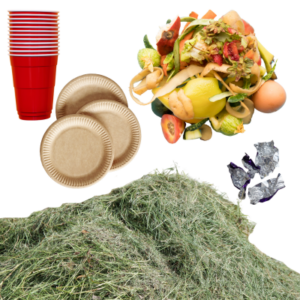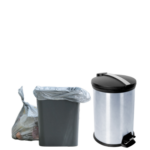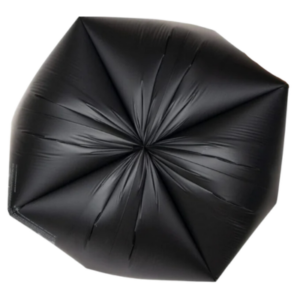
HOW TO: CHOOSING THE RIGHT TRASH LINER
Choosing the right trash liner can make a significant difference in maintaining cleanliness and efficiency. Our comprehensive guide provides valuable tips and insights to help you select the perfect trash liner for your specific needs. Whether you’re managing a small office or a large facility, learn how to make the best purchasing decisions for optimal results.
1: PLASTIC TYPES
The type of plastic is a big determining factor when choosing a can liner.
LINEAR LOW DENSITY BAGS (LLD)
HI-DENSITY BAGS (Hi-D)
Linear Low Density bags (LLD) are used for rough or sharp objects under tough transport conditions. They are strong and highly resistant to tearing but handle lower load capacities than Hi-Density bags.
Used for paper and other smooth objects under moderate transport, Hi-Density (Hi-D) bags are very strong and handle higher load capacities than LLD bags– but tear easier once punctured.


SUGGESTED LLD APPLICATION
SUGGESTED Hi-D APPLICATIONS
- Sticks, rough yard trimmings, glass
- Metal with sharp edges
- Plastic eating utensils, scraps
- Paper plates, cups, towels, office supplies
- Grass, rags, smooth heavy objects
- Cans and food without sharp edges
2: GAUGE
Gauge refers to the thickness of the film that makes up the liner bag. This section explores gauge equivalents and recommendations.
LLD
Hi-D
STRENGTH
GAUGE
WEIGHT
LIGHT
0.30 – 0.49 MIL
10 – 20 LBS
MEDIUM
0.50 – 0.60 MIL
21 – 30 LBS
HEAVY
0.61 – 0.74 MIL
31 – 40 LBS
EXTRA HEAVY
0.75 – 0.80 MIL
41 – 50 LBS
SUPER TUF
0.81 – 1.0 MIL
51 – 60 LBS
SUPER HEAVY
1.1 – 1.2 MIL
61 – 65 LBS
XX HEAVY
1.3 – 1.9 MIL
66 – 70 LBS
XXX HEAVY
2.0 – 3.0 MIL
71 – 75 LBS
STRENGTH
GAUGE
WEIGHT
LIGHT
1.1 – 1.2 MIL
10 – 20 LBS
MEDIUM
6 – 9 MIC
FOR MIDSIZE CANS
HEAVY
10 – 12 MIC
FOR SMALL CANS
EXTRA HEAVY
13 – 14 MIC
FOR LARGER CANS
XX HEAVY
15 – 17 MIC
18 – 22 MIC



SMALL
MEDIUM
LARGE
LLD Gauge Equivalents & Recommendations
Hi-D Gauge Equivalents & Recommendations
SMALL
MEDIUM
LARGE
LIGHT: 0.3 – 0.49 MIL
HEAVY: 0.61 – 0.74 MIL
SPR HEAVY: 1.1 – 1.2 MIL
MED: 0.5 – 0.6 MIL
X HEAVY: 0.75 – 0.8 MIL
XX HEAVY: 1.3 – 1.9 MIL
SPR TUF: 1.3 – 1.9 MIL
XXX HEAVY: 2 – 3 MIL
SMALL
MEDIUM
LARGE
MED: 10 – 12 MIC
X HEAVY: 15 – 17 MIC
XX HEAVY: 18 – 22 MIC
CONVERT MILs to MICs
CONVERT MICs to MILs
Multiply the MILs by 25.4 to arrive at the MIC thickness.
Divide the microns by 25.4 to arrive at the MIL thickness.
10 MIC ÷ 25.4 = 0.39 MIL
24 MIC ÷ 25.4 = 0.94 MIL
0.3 MIL x 25.4 = 7.6 MIC
0.65 MIL x 25.4 = 16.5 MIC
3: SIZING
Below are the most common trash bin sizes. Determine which size your bins are by measuring both around the circumference of the opening and its height.

LINERS
Selecting the correct liner size is crucial, as choosing the wrong one can lead to unnecessary plastic waste and increased costs.

LINER SEALS
Garbage can liner seals are designed to prevent leaks and spills by securely containing waste within the liner. The most common types include flat seals, star seals, and gusset seals, each offering different levels of leak resistance and capacity management.
HIGH PERFORMANCE STAR SEAL
FLAT SEAL
GUSSET SEAL



- Most common type of seal
- Designed without gussets
- Eliminates gaps where leaks can occur
- Conforms to the shape of the container
- Maximizes carrying capacity
- Sized in two dimensions (i.e. 40×46)
- Two-dimensional bag, like a pillowcase
- Strong, but with potential to leak
- Do not conform well to the can shape
- Sized in two dimensions (i.e. 40×46)
- Rarely used in the industry
- Flat-style bag design
- Both sides tucked in to form gussets
- Potentially weak bottom seal
- Sealed through four layers of film (middle of the bag has only two sealed layers)
- Sized in three dimensions (i.e. 23x17x46)
